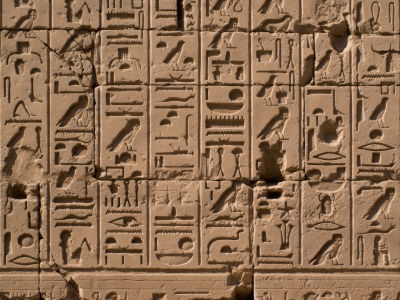'The oldest ghost painting in the world' is drawn on a clay tablet in ancient Babylonia

There are stories of ghosts all over the world who remain in this world as spirits despite their physical death. For example, in Roman mythology, which is said to have been handed down from prehistoric times, the spirit of the dead, called Lemures, appears. To do. It is said that 'the oldest ghost painting in the world' is drawn on the clay tablets of ancient Babylonia made about 3500 years ago in the British Museum.
Figures of Babylon: oldest drawing of a ghost found in British Museum vault | British Museum | The Guardian
https://www.theguardian.com/culture/2021/oct/16/figures-of-babylon-oldest-drawing-of-a-ghost-found-in-british-museum-vault
Oldest ghost drawing discovered on Babylonian exorcism tablet | Live Science
https://www.livescience.com/oldest-ghost-drawing-babylonian-exorcism-tablet
Irving Finkel, a senior curator in the Middle East at the British Museum, depicts a previously overlooked 'ghost figure' on a clay tablet in an ancient Babylonian tablet about 3,500 years ago in an underground storage room. I noticed that. The clay tablets have been stored since the British Museum bought them from Babylon in the 19th century, but the ghost paintings are said to be visible only when looking into them from above in a light place, so they are placed in a dim storage room. It seems that no one noticed the existence of the ghost while he was there.
'No one cares because it looks like nothing is written on the part where the picture is drawn, but when you put it under the lamp and look it up, it's amazing. The shapes pop out over time. '
This is a clay tablet on which a ghost is drawn. At first glance, it's hard to tell where the ghost is drawn ...

On the left side of the clay tablet, the figure of a male ghost with a beard is drawn. A rope is hung on the ghost's hand, and the woman on the right is pulling it. It is difficult to conclude that it is a ghost from this picture alone, but when Mr. Finkel deciphered the wedge-shaped text written on the back of the clay tablet, the content was 'a ghost that grabs a person and does not let go'. It seems that it was a guide that described how to send it to the underworld.

According to the instructions on the back, the ritual to drive away ghosts requires making male and female dolls. Then, dress the male doll to prepare for the trip, and dress the female doll with four red clothes, wrap it in a purple cloth, and then bed, chair, mat, towel, comb, bottle, etc. Prepare. Next, prepare a carnelian vessel for pouring beer at sunrise and a fishing incense burner filled with sandalwood , and bury the doll while chanting a spell that calls the sun god Shamash.
It is believed that this ritual transfers ghosts to dolls so that they can receive the blessings of Shamash, and the picture on the surface is 'a woman (doll) marrying a male ghost.' It is speculated that it is an illustration showing that 'the ghost of a man is taken to the underworld.' At the end of the explanation, it says, 'Don't look back,' and Finkel believes the warning is for dolls that have entered the underworld, but a warning for those who perform the ritual. There is a possibility.
Finkel points out that the ritual of sending ghosts to the underworld will take place when the ghosts in the house really do harm and many people are surprised and can't stand it anymore. 'This is an apparently miserable male ghost. A tall, thin, bearded ghost was wandering around the house, upsetting the nerves of the people in the house. It's not hard to imagine. Ultimately, it's been analyzed that this ghost was needed by a lover. '' The idea that you can get rid of a ghost by giving it a companion is pretty cartoonish. It's an idea. '
For the clay board with ghosts, 'The First Ghosts: A rich history of ancient ghosts and ghost stories from the British Museum curator ' will be released on November 11, 2021. A rich history of ancient ghosts and ghost stories) ”will be introduced along with other ghost stories from Mesopotamia. 'The people (of ancient Mesopotamia) on the pages of the book don't look like museum buildings. They don't look like weirdos on different planets. They're the same as us. It looks like a human being, 'he said, claiming that the clay tablets on which the ghosts were written show that the humanity of the people at that time was the same as it is today.
The British Museum is said to be 'full of ghosts,' but Finkel himself has never seen ghosts even in a dim underground storage room.
Related Posts:
in Note, Posted by log1h_ik







